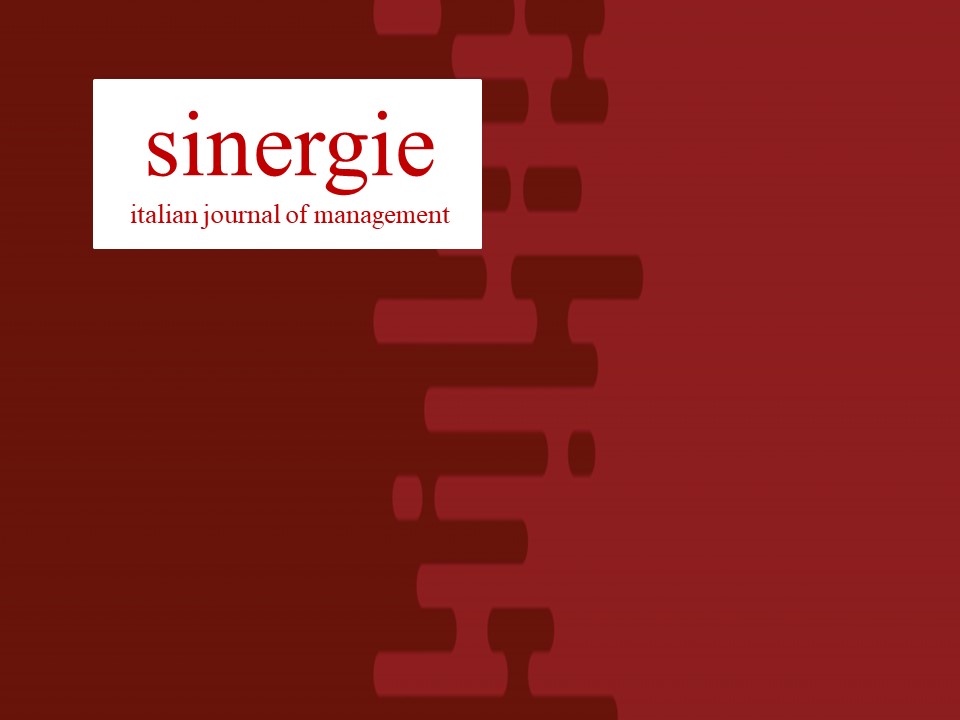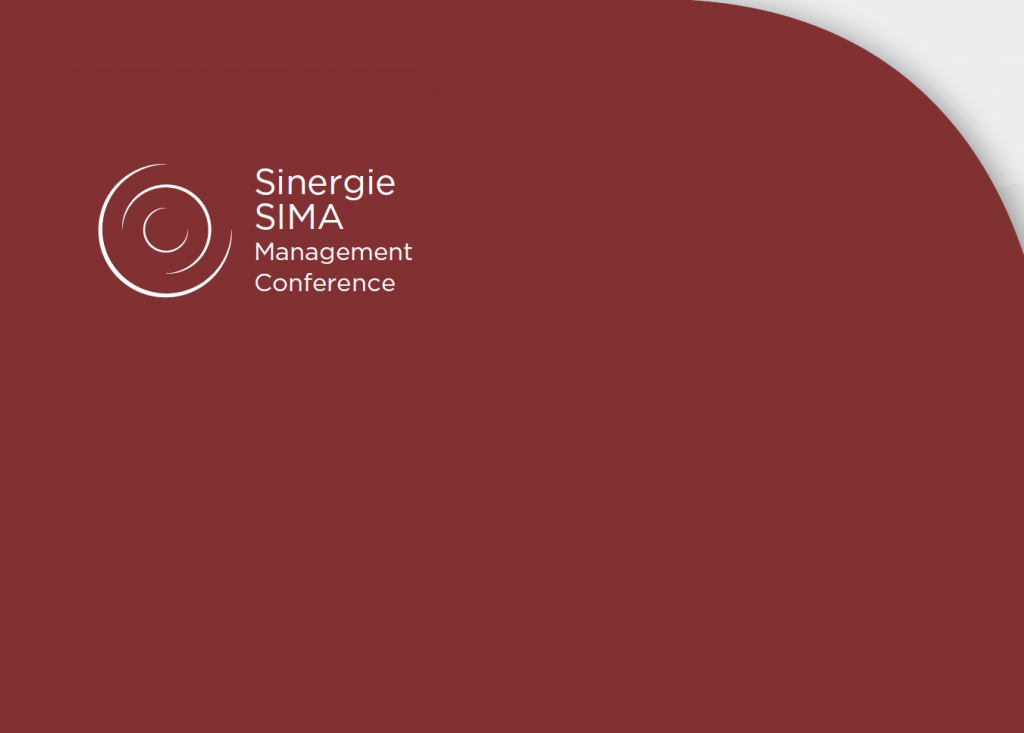La hubris manageriale quale fonte della irresponsabilità d'impresa: uno studio esplorativo
Obiettivo del paper: Londata di scandali etici che ha colpito intensamente il mondo delle imprese a partire dalla fine del XX secolo ha fatto emergere lesigenza di esplorare i meccanismi istituzionali tesi a evitare nuovi casi di corporate social irresponsibility (CSI). Sintende contribuire a tale dibattito introducendo la trappola della hubris manageriale quale determinante della CSI.
Metodologia: Esame qualitativo-longitudinale del caso Parmalat nel periodo in cui stata sotto la guida del suo fondatore Calisto Tanzi (1961-2003). Lanalisi del caso segue i criteri scientifici del campionamento teorico, della triangolazione dei fatti e della periodizzazione della narrazione.
Risultati: Generalmente gli studi sui casi di CSI rimandano alle problematiche di corporate governance e alla questione etica. Questo articolo fornisce una spiegazione alternativa a quelle giindicate in letteratura: il manager affetto da hubris pucondurre limpresa verso condizioni dirresponsabilit anche grave, nei riguardi dell ambiente esterno.
Limiti della ricerca: Analisi di un singolo caso. Sarebbe opportuno nel futuro ampliare lindagine ad altri casi in modo da valutare il grado di estendibilitdei risultati ottenuti.
Implicazioni pratiche: Necessitdi superare la silo view dei processi decisionali coinvolgendo nelle decisioni strategiche esperti sia interni e sia esterni; avere sempre a mente che la formula che ha generato successo nel passato tale da non poter assicurare il successo in altri contesti e/o nel tempo futuro.
Originalità del paper: Si contribuisce alla letteratura manageriale mediante lapplicazione di unipotesi generale, quella della hubris manageriale, a un contesto specifico, ovvero la CSI. Inoltre, in maniera prospettica e proscrittiva, lanalisi del caso in oggetto fornisce una base empirica e concettuale utile per ladozione di decisioni strategiche tese a prevenire taluni errori manageriali.
Riferimenti bibliografici
AMBROSINI V., BOWMAN C., COLLIER N. (2010), Using Teaching Case Studies for Management Research, Strategic Organization, vol. 8, n. 3, pp. 206-229.
BEN-DAVID I., GRAHAM J.R., HARVEY C.R. (2007), Managerial overconfidence and corporate policies, National Bureau of Economic Research, n. w13711, pp. 1-55.
BOLLAERT H., PETIT V. (2010), Beyond the Dark Side of Executive Psychology: Current Research and New Directions, European Management Journal, vol. 28, n. 5, pp. 362-376.
CLAYMAN S.E., REISNER A. (1998). Gatekeeping in action: Editorial conferences and assessments of newsworthiness, American Sociological Review, vol. 63, n. 2, pp. 178-199.
DAGNINO G.B., MIN A., PICONE P.M. (2013). The hubris hypothesis of corporate social irresponsibility: evidence from the Parmalat case, in Amann W., Stachowicz-Stanusch A., Integrity in organizations – Building the foundations for humanistic management, Palgrave MacMillan, New York.
DOUKAS J. A., PETMEZAS D. (2007), Acquisitions, overconfident managers and self-attribution bias, European Financial Management, vol. 13, n. 3, pp. 531-577.
EISENHARDT K.M. (1989), Building Theories from Case Study Research, Academy of Management Review, vol. 14, n. 4, pp. 532-550.
EISENHARDT K.M., GRAEBNER M.E. (2007), Theory Building from Cases: Opportunities and Challenges, Academy of Management Journal, vol. 50, n. 1, pp. 25-32.
FINKELSTEIN S., HAMBRICK D.C., CANNELLA A. (2009), Strategic Leadership, Oxford University Press, New York.
FRANZINI G. (2004), Il crack Parmalat – Storia del crollo dellimpero del latte, Editori Riuniti, Roma.
GALASSO A., SIMCOE T.S. (2011),CEO Overconfidence and innovation, Management Science, vol. 57, n. 8, pp. 1469-1484.
GERRING J. (2007), Case Study Research, Cambridge University Press, Cambridge, MA.
GERVAIS S., ODEAN T. (2001), Learning to be overconfident, Review of Financial Studies, vol. 14, n. 1, pp. 1-27.
GERVAIS S., HEATON J. B., ODEAN T. (2011),Overconfidence, compensation contracts, and capital budgeting, Journal of Finance, vol. 66, n. 5, pp. 1735-1777.
GIBBERT M., RUIGROK W., WICKI B. (2008), What Passes as a Rigorous Study?, Strategic Management Journal, vol. 29, n. 13, pp. 1465-1474.
GRANT R.M., VISCONTI M. (2006), The Strategic Background to Corporate Accounting Scandals, Long Range Planning, vol. 39, n. 4, pp. 361-383.
GUMBEL P. (2004), Parmalat scandal – Italy: The land of bilk and money, Fortune, vol. 149, n. 2, p. 32.
HAMILTON S., MOSS I. (2005), ParmalatSpA: An Impressive Milking System, IMD case study ,1-2015, pp. 1-35
HAYWARD M.L.A., HAMBRICK D.C. (1997), Explaining the Premiums Paid for Large Acquisition: Evidence for CEO Hubris, Administrative Science Quarterly, vol. 42, n. 1, pp. 103-127.
HAYWARD M.L.A., RINDOVA V.P., POLLOCK T.G. (2004), Believing ones own press: The causes and consequences of CEO celebrity, Strategic Management Journal, vol. 25, n. 7, pp. 637-653.
HAYWARD M.L.A., SHEPHERD A., GRIFFIN D. (2006), A Hubris Theory of Entrepreneurship, Management Science, vol. 52, n. 2, pp. 160-172.
HILLER N.J., HAMBRICK D.C. (2005), Conceptualizing Executive Hubris: The Role of (Hyper-) core Self Evaluations in Strategic Decision-Making, Strategic Management Journal, vol. 26, n. 4, pp. 297-319.
HIRSHLEIFER D., LOW A., TEOH S.H. (2012), Are overconfident CEOs better innovators?, The Journal of Finance, vol. 67, n. 4, pp. 1457-1498.
JICK T.D. (1979), Mixing Qualitative and Quantitative Methods: Triangulation in Action, Administrative Science Quarterly, vol. 24, n. 4, pp. 602-611.
KROLL M.J., TOOMBS L.A., WRIGHT P. (2000), Napoleons Tragic March Home from Moscow: Lesson in Hubris, Academy of Management Executive, vol. 14, n. 1, pp. 117-128.
LANGE D., WASHBURN N.T. (2012), Understanding attributions of Corporate social irresponsibility, Academy of Management Review, vol. 37, n. 2, pp. 300-326.
LI J., TANG Y. (2010), CEO hubris and firm risk taking in China: The moderating role of managerial discretion, Academy of Management Journal, vol. 53, n. 1, pp. 45-68.
LIN Y.H., HU S.Y., CHEN M.S. (2005), Managerial Optimism and Corporate Investment: Some Empirical Evidence from Taiwan, Pacific-Basin Finance Journal, vol. 13, n. 5, pp. 523-546.
LONG S. (2008), The Perverse Organization and its Deadly Sins, Karnac, London.
MAGNANELLI B.S. (2013), I sistemi di governance e le frodi contabili. Unanalisi empirica, RIREA, Roma.
MALAGUTTI V. (2004), Buconero Spa, dentro il crack Parmalat, Laterza Editori, Roma.
MALMENDIER U., TATE G. (2005). CEO overconfidence and corporate investment, The Journal of Finance, vol. 60, n. 6, pp. 2661-2700.
MALMENDIER U., TATE G. (2008), Who makes acquisition? CEO Overconfidence and the Markets Reaction, Journal of Financial Economics, vol. 89, n. 1, pp. 20-43.
MELIS A. (2005), Corporate Governance Failures: to what extent is Parmalat a Particularly Italian Case?, Corporate Governance: An International Review, vol. 13, n. 4, pp. 478-488.
MOCCIARO LI DESTRI A., PICONE P.M. (2009), La valutazione delle sinergie nelle operazioni di M&A, in Capasso A., Meglio O. (a cura di) Fusioni e acquisizioni. Teorie, metodi, esperienze, Franco Angeli, Milano.
MOCCIARO LI DESTRI A. (2013), Managerial irresponsibility and firm survival. Pivoting the company in the aftermath of a social scandal, Franco Angeli, Milano.
NICITA A. (2004), Parmalat: Italian genes in a global fraud, Ponte, vol. 60, n. 4, pp. 103-106.
OWEN D., DAVIDSON J. (2009), Hubris syndrome: An acquired personality disorder? A study of US Presidents and UK Prime Ministers over the last 100 years, Brain, vol. 132, n. 5, pp. 1396-1406.
PICONE P.M., DAGNINO G.B., MIN A. (2014), The origin of failure: A multidisciplinary appraisal of the hubris hypothesis and proposed research agenda, Academy of Management Perspectives, in press.
PETIT V., BOLLAERT H. (2011), Flying Too Close to the Sun? Hubris Among CEOs and How to Prevent it, Journal Business Ethics, DOI 10.1007/s10551-011-1097-1.
RAJAN M.V., TAYAN B. (2008), Financial Restatements: Methods Companies Use to Distort Financial Performance, Stanford Graduate School of Business, A198, pp. 6-7.
RAU P.R., VERMAELEN T. (1998), Glamour, Value and the Post-acquisition Performance of Acquiring Firms, Journal of Financial Economics, vol. 49, n. 2, pp. 223-253.
ROLL R. (1986), The Hubris Hypothesis of Corporate Takeovers, Journal of Business, vol. 59, n. 2, pp. 197-216.
SHEIN J., HAINES N., HORSTMANN M., KAULFUSS T., KOESTER C., KOO W., LANDIN, J.L. (2008), Parmalat USA Turnaround, Kellogg School of Management, KEL356.
SCHUDSON M. (2002), The news media as political institutions, Annual review of political science, vol. 5, n. 1, pp. 249-269.
SIGGELKOW N. (2007), Persuasion with Case Studies, Academy of Management Journal, vol. 50, n. 1, pp. 20-24.
SIMON M., HOUGHTON S.M. (2003), The Relationship between Overconfidence and the Introduction of Risky Products: Evidence from a Field Study, Academy of Management Journal, vol. 46, n. 2, pp. 13-149.
SKA?A D. (2008), Overconfidence in Psychology and Finance – an Interdisciplinary Literature Review, Financial Markets and Institutions, vol. April, n. 4, pp. 33-50.
TAPIES J., TONINATO F. (2005), Milking Money out of Parmalat, IESE Business School case study, DG-1478-E 0-305-041, pp. 1-35.
VAN DE VEN A.H., HUBER G.P. (1990), Longitudinal Field Research Methods for Studying Processes of Organizational Change, Organization Science, vol. 1, n. 3, pp. 213-219.
YIN R.K. (2003), Case Study Research: Design and Methods, Sage publication, Thousand Oaks, CA.
ZACHARAKIS A.L., SHEPHERD D.A. (2001), The Nature of Information and Overconfidence on Venture Capitalists Decision Making, Journal of Business Venturing, vol. 16, n. 4, pp. 311-332.


